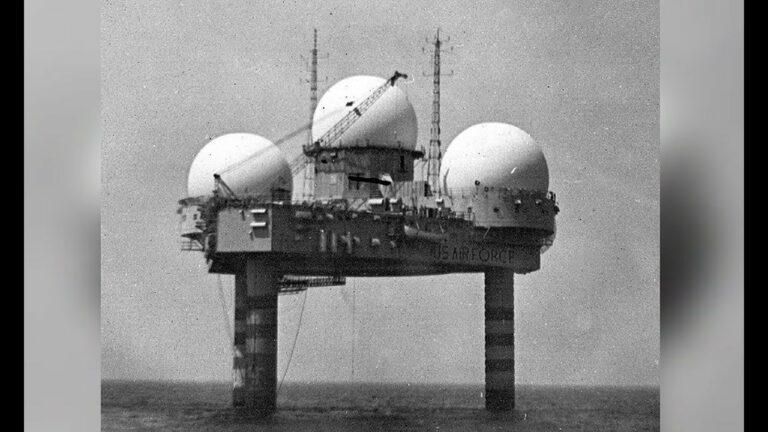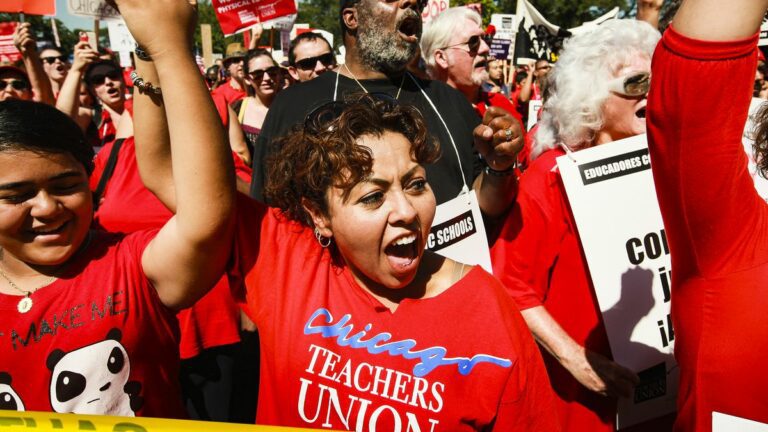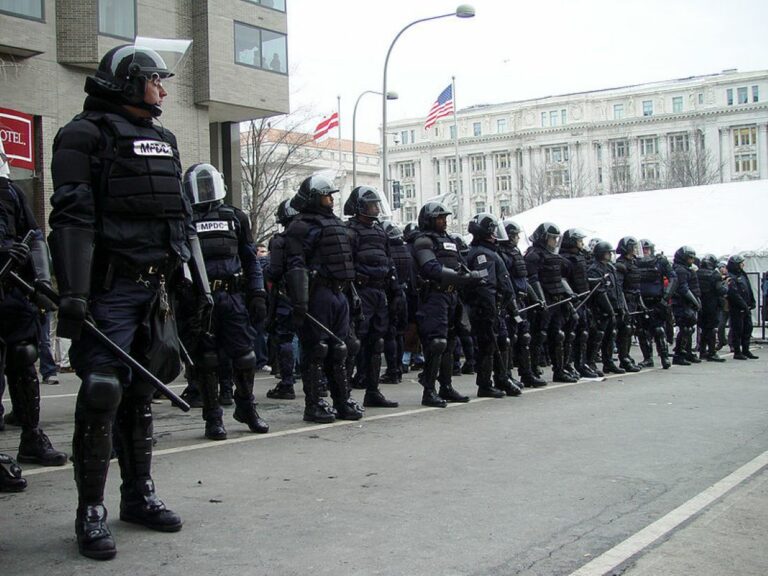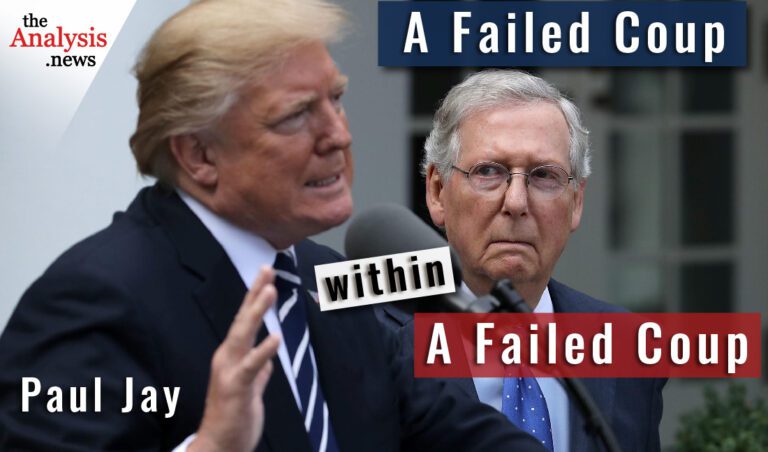U.S. cold-war nuclear plan called for all-out attack on China, even if it was not involved in the war, says Daniel Ellsberg on Reality Itself with Paul Jay. This is an episode of Reality Asserts Itself, produced November 9, 2018, with Paul Jay.
STORY TRANSCRIPT
PAUL JAY: Welcome back to Reality Asserts Itself. I’m Paul Jay. This is The Real News Network, and we’re continuing our discussion with Daniel Ellsberg. Thanks for joining us again.
DANIEL ELLSBERG: Good to be here.
PAUL JAY: I’ll just remind everyone that Daniel, in the early 1960s, worked for Rand Corporation. And as is the title of his book, The Doomsday Machine: The Confessions of a Nuclear War Planner, that’s what he was. He was planning nuclear war; had the highest security clearance. Of course, he was to discover that there was actual various levels of highest security clearance.
You discovered that the war plan, the underlying assumption of it, is that a nuclear war could be, quote, “winnable,” and there’s a lot more focus on making sure that a first strike could be carried off than there was focus on making sure an accidental event didn’t incorrectly launch a strike. You found lots of problems in the systems that are supposed to safeguard, because their focus was on striking. But their focus wasn’t just on striking the Soviet Union. Their plan included China. So lead us through your series of discoveries here that started, I would expect, to blow your mind.
DANIEL ELLSBERG: Well, first of all, under Eisenhower, who felt that it would be uneconomical, it would bankrupt the country to prepare to fight the Soviet Union in a limited war, which would be limited only by the size of Russian ground forces, which were very large and which we could not afford to match, and that a limited war, nuclear war, would remain limited. That was sound, and really always has been. Therefore, rather than fight a ground war arising, let’s say, over the Berlin incident, or an uprising in East Europe, which developed into a conflict, armed conflict, the U.S. would have only one plan for fighting Soviet troops anywhere in the world under any circumstances, and that was all-out war, including Russia and every city in the Soviet Union, and in China, since he still- there was, as far as he knew then, still a Sino-Soviet bloc. That was very much eroding by the end of his term, and by early in Kennedy’s term it really didn’t exist. But our intelligence was slow to appreciate that.
So the idea was that under any circumstances where we were fighting Russian troops, we would also be hitting every city in China, as well as every city in the Soviet Union. Because that was the nature of our plan, following from LeMay’s campaign against Japan in World War II with incendiary bombs, hitting every city, one after another, trying to burn it to the ground. When he was-
PAUL JAY: LeMay is head of the Air Force at this time.
DANIEL ELLSBERG: … he was given atomic bombs as commander of SAC, Strategic Air Command, later, under- under Truman, actually, and then kept it under Eisenhower. And was succeeded by Power, who had led the attack, actually, on Tokyo, the one that killed more people than any other terror attack in history. Powers then became head of the- Power, I’m sorry. Power became head of the Strategic Air Command; continued this targeting scheme, which permitted a very large number of targets. Thousands, actually, of targets. Or in the end, they pared it down to about 1,100 separate targets, however, which included a particular thermonuclear weapon, would cover a number of military and urban targets.
PAUL JAY: At one point you ask how many people do they think will be killed. What’s the answer you got?
DANIEL ELLSBERG: Well, I drafted a question which was sent by the Deputy National Security Assistant to the Joint Chiefs in the name of President Kennedy. And the question was if your plans were carried out as planned, meaning not interfered with by the Soviets significantly, and under the circumstances where they were planned, which was an escalation of an armed conflict in Europe or evidence of an alarm, which could be false, but an indication that the Soviets were attacking. If the plans were carried out, how many people would die in the Soviet Union and China?
And the answer to that was in the form of a chart, which showed that they anticipated that in the first several months with fallout it would be 275 million dead within weeks; 325 million in the Soviet Union and China alone in a few months. I then asked, how many all together elsewhere? And the answer was 600 million. Another 100 million in East Europe; 100 million in West Europe- our allies- from fallout from our attacks on the Soviet bloc. And 100 million or more in areas contiguous to the Sino-Soviet bloc. India, Afghanistan, Austria, Finland. Neutral countries would be essentially wiped out by fallout, without a single warhead of ours landing in their territory. And that’s without considering the Soviet response to this, either on us or on West Europe. Six hundred million people. A hundred Holocausts.
PAUL JAY: What impact did that have on you personally?
DANIEL ELLSBERG: Well, I was-
PAUL JAY: Because that’s what you’re involved in planning.
DANIEL ELLSBERG: I was horrified that they knew this. They had calculated, against my earlier expectations. I thought they hadn’t really developed models that would tell them civilian casualties, which they supposedly weren’t so interested in, as opposed to military bases, or urban industrial centers- that is, cities. But had they really, were they really aware of what their fallout would do, for example? They were. And it was shocking that they were ready to quickly present that to the President without any, without resigning. Without saying how horrible this was. Without anguish. Just this is our plan. It was the most evil plan, I thought, that had ever existed in human history. No other tyrant I know, no Genghis Khan or Temujin had been able to do casualties on that level; deaths on that level. I thought it was insane and evil.
PAUL JAY: And you asked another question. What if in this military-conventional military confrontation between the U.S. and Russia that would lead to this, what if China wasn’t involved? You asked, is there a plan?
DANIEL ELLSBERG: Well, as … I’ve been a Marine from ’54-’57. General Shoup, David Shoup, got the Medal of Honor from Tarawa. My battalion had been first ashore at Tarawa, I discovered. And when I was operations officer I put posters all around our unit saying “First Ashore at Tarawa, 3rd Battalion, 2nd Marines.” He gave the graduation speech at my officer training camp in Quantico, David Shoup.
When Shoup was briefed on this plan in late 1959- or perhaps it was 1960- his reaction was a plan that kills 100 million Chinese without their having been involved in the conflict is not a good plan, he said to General Power. He said, that is not the American way. But it was the American plan. And his, his warning, which- his reaction, which was like mine and a few others’, was ignored. And we went ahead with that.
PAUL JAY: Please join us for the next part of our series of interviews with Daniel Ellsberg on Reality Asserts Itself.
In his book The Doomsday Machine, Daniel Ellsberg writes:
“A subsequent chart shown by the briefer displayed deaths on the vertical axis and time in hours, extending out to weeks, along the horizontal axis. He announced that there were about 175 million people in the USSR. This chart depicted the deaths from fallout alone—not from the direct effects of blast or radiation from a bomb going off, just from fallout subsequent to the attacks when radioactive dust propelled to high altitudes by the initial blast begins to fall back to earth. The curve of deaths, rising as time went by, leveled off at about 100 million, showing that more than half the population of the Soviet Union would be killed from radioactive fallout alone…. The briefing was soon concluded, to be followed by an identical one covering the attack on China given by a different speaker. Eventually, he too arrived at a chart showing deaths from fallout alone. “There are about 600 million Chinese in China,” he said. His chart went up to half that number, 300 million, on the vertical axis. It showed that deaths from fallout as time passed after the attack leveled out at that number, 300 million, half the population of China.
“A voice out of the gloom from somewhere behind me interrupted, saying, “May I ask a question?” General Power turned again in his front-row seat, stared into the darkness, and said, “Yeah, what is it?” in a tone not likely to encourage the timid. “What if this isn’t China’s war?” the voice asked. “What if this is just a war with the Soviets? Can you change the plan?” “Well, yeah,” said General Power resignedly, “we can, but I hope nobody thinks of it, because it would really screw up the plan.”






